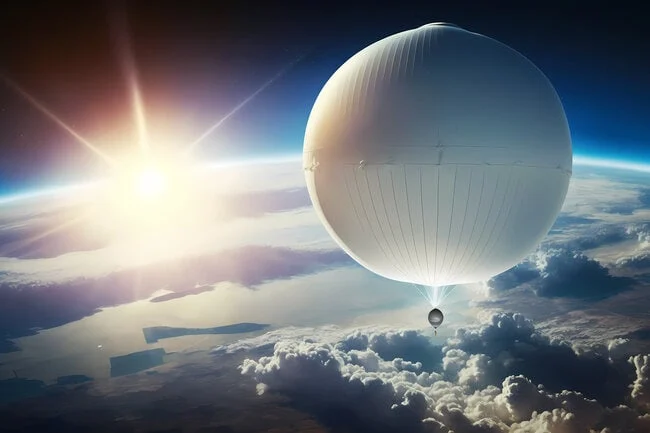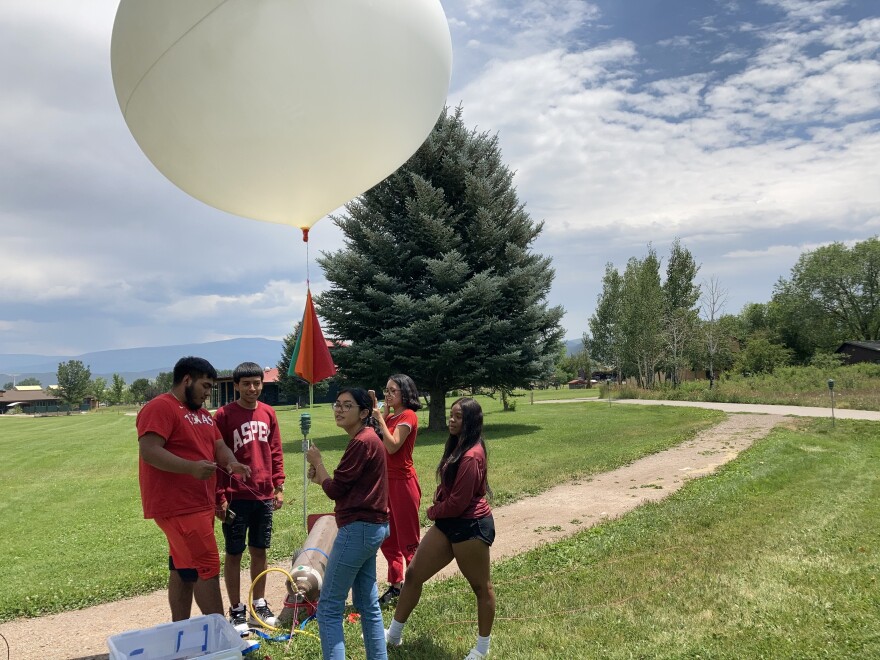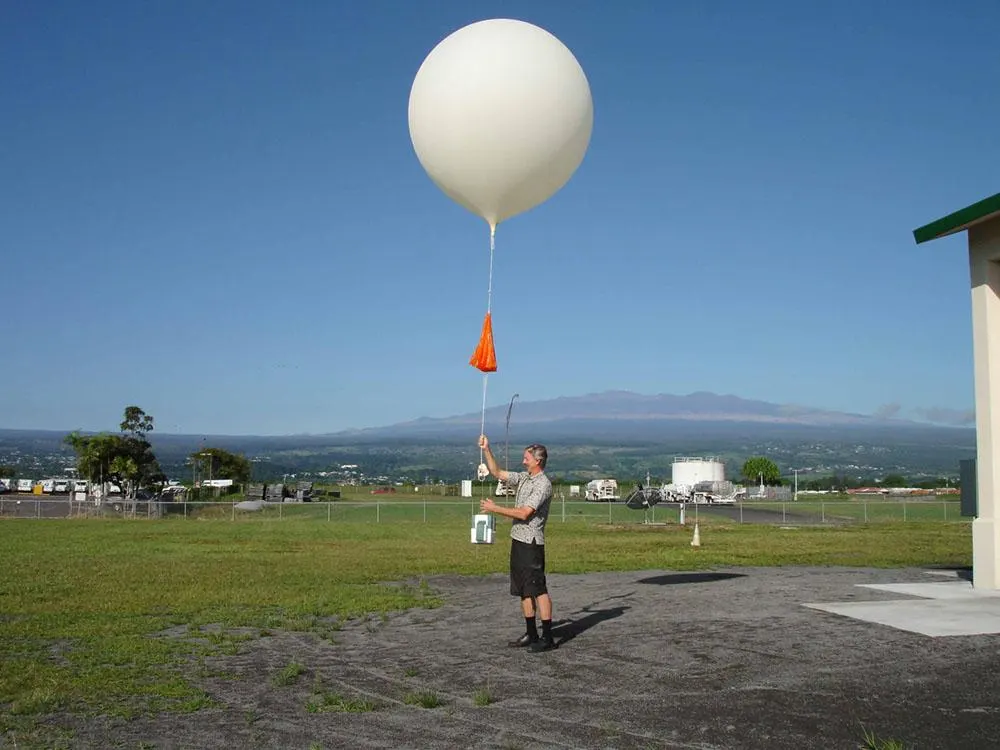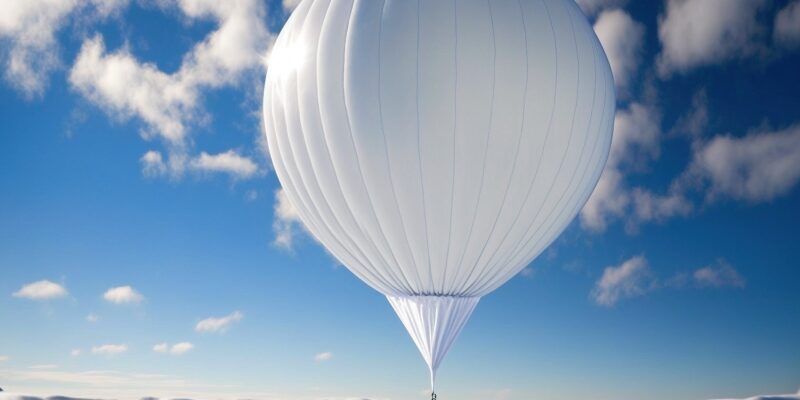A weather balloon, also called a sounding balloon, is a balloon that carries different equipment to the atmosphere to gather and relay information on atmospheric pressure, humidity, temperature, and wind speed.
It is equipped with a small measuring device called a radiosonde, usually expendable. When exploring the various types of balloons, like water balloon cannons, helium balloons, and round ones, it is natural for one to reach weather balloons and read more about them.
Then, curious questions usually take hold of us till we wonder what is physically possible and what isn’t. For instance, can we launch a weather balloon into space? If yes, how? If not, why not? What are the limitations?
The answers to all these questions and many more are compiled in our guide.
Can You Launch a Weather Balloon Into Space?

The simple answer to that question is no. Weather balloons are designed to gather data within the Earth’s atmosphere, specifically the troposphere and stratosphere. Because of their primary functionality, they pose several constraints to survive in space. The balloon itself is filled with a gas lighter than air, which allows it to rise to high altitudes.
However, without an atmosphere, the balloon will most probably burst before reaching an altitude even close to the Karman line. Additionally, they are made of latex or other similar materials, which won’t be able to sustain the harsh conditions created by the lack of atmosphere and space.
Next, we must consider the weight and payload limitations. There’s a certain limit to which the balloon can carry the equipment necessary for analysis of the atmosphere. As the balloon reaches higher altitudes, it expands more, and its capacity to carry weight reduces. The weather balloon won’t be able to combat the varying temperatures and aerodynamics of extremely high altitudes and space.
Lastly, the most significant reason you shouldn’t launch a weather balloon into space is that it is designed to be used strictly within the Earth’s atmosphere and doesn’t bear the structural integrity to survive or function efficiently in space.
How to Launch a Weather Balloon?

While you certainly can’t and shouldn’t try to launch a weather balloon into space, you can always launch it to the high-altitude regions of Earth’s atmosphere. Moreover, the entire process is quite simple and easy to follow. Check out the following step-by-step guide to figure out how to launch a weather balloon into space.
- Prep: You must gather everything necessary to prepare and launch the weather balloon. An extensive list of all the requirements is given in the following section.
- Payload: Payload denotes the package that you’re going to send up. You can choose to send Cameras, GPS units, or anything else that you wish to send. It will be easier to manage if it is lightweight.
- Balloon & Parachute: The balloon and parachute must be matched to the size of your payload. The latter is what will ensure that the balloon floats down to the surface of the earth again.
- Launch: Fill up the balloon appropriately with helium gas. It’s advisable to launch early in the morning. Also, ensure that you have prepped the balloon and the payload properly to avoid any last-minute delays.
- Recovery: To make the recovery of the weather balloon easier, you can install GPS trackers on the payload. Or you can also calculate and figure out where it may land. Plan the launch position accordingly. Otherwise, you may end up losing the balloon.
What Do I Need to Prep for The Launch?

Although we have mentioned a long list of items, most of these are optional, and you can choose how to design your weather balloon and its payload by exploring different options. Additionally, decide what you want to send up, depending on the purpose of sending the weather balloon.
- 3 Weather balloon – 300gms, 80,000 feet, 8 feet diameter, 12’4” burst.
- GPS tracking device
- Parachute
- Payload
- Cameras
- Duct tape
- Digital scale
- Helium cylinder
- Tank regulator
- Plastic Tubing
- Zip ties
- Small piece of PVC
- Any personal objects to add a unique touch!
Feel free to improvise and add any analytical objects or pieces of equipment you want to the weather balloon. However, keep in mind that these will increase the weight of the payload. You can add hand-warmers to extend the life of cameras in unsuitable conditions at high-altitude regions. Ultimately, the decision lies with you.
Final Thoughts
When the question of sending a weather balloon to space arises, its structural design poses several obstacles. Since weather balloons aren’t designed to sustain space conditions, they can only function within the Earth’s atmosphere.
In addition to that, the balloon is filled with helium gas, which makes the presence of the atmosphere absolutely crucial for the balloon to continue floating. Lastly, the payload and other types of equipment tied to the weather balloons aren’t designed to withstand space conditions either.
Although you can’t launch a weather balloon into space, you can launch it in the high-altitude regions of the Earth’s atmosphere in a few steps. Prep the payload, fill up the balloon, add the parachute, decide the time and location for launch, and then recover the weather balloon once it has served its purpose.
Which are some of the analytical pieces of equipment that you would like to send with a weather balloon? Let us know in the comments section below!














Comments